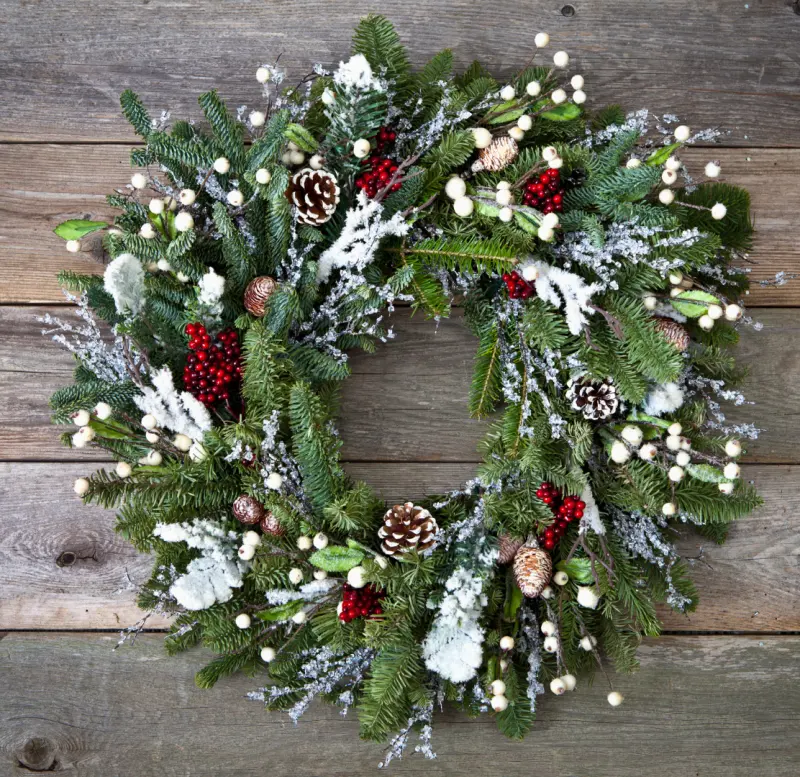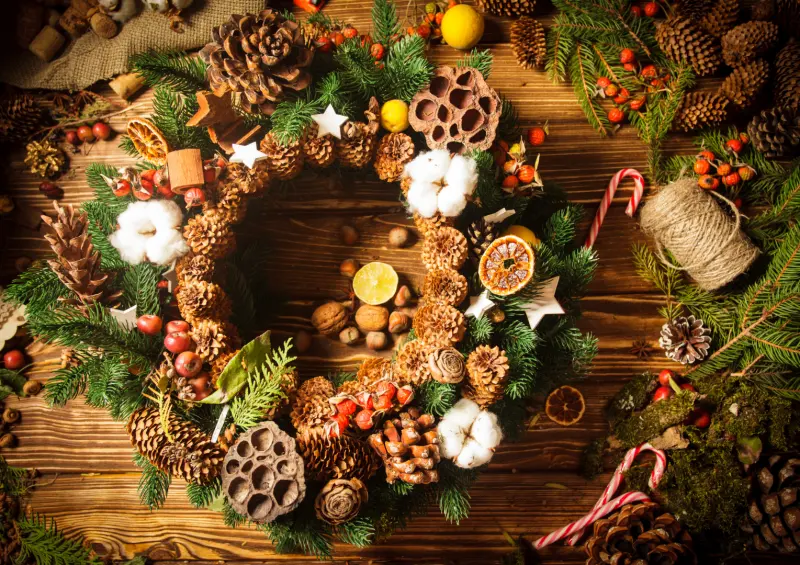Wreath

Origin
Wreaths are a classic decorative feature with deep historical and cultural significance. Their circular shape and versatile design make them ideal for various uses, from festive decorations to memorial tributes. A key moment for wreaths is during the Christmas season, when they take centre stage in homes, churches, and public spaces.
Wreaths have a long history, dating back to ancient times.
Christian Tradition: The circular shape of wreaths, with no beginning or end, became a symbol of eternity and eternal life. By the 16th century, Advent wreaths gained popularity in Europe as a preparation for Christmas.
Ancient Greece and Rome: Wreaths symbolised victory and honour, often made from laurel or olive leaves and worn as crowns by athletes and leaders.
Characteristics
Wreaths are versatile and designed for specific occasions. Key features include:
- Shape and Design
- Circular, symbolising unity and eternity.
- Available in various sizes, from small personal designs to large, striking displays.
- Materials
- Natural: Fresh evergreens, flowers, and berries for a traditional look.
- Artificial: Durable materials that mimic natural elements, often pre-decorated.
- Colours and Themes
- Christmas wreaths typically feature red, green, and gold, symbolising the festive spirit.
- The use of frosted or snow-tipped decorations adds a wintery touch.
Care
To keep your Christmas wreath looking fresh and beautiful throughout the holiday season, follow these tips:
Fresh Wreaths
- Hydrate: Mist daily with water and use a floral foam base soaked in water to keep greenery fresh.
- Placement: Avoid direct sunlight, heat sources, and overly windy or damp conditions.
Artificial Wreaths
- Cleaning: Gently dust before hanging and after the season.
- Storage: Store in a dry, cool place in a protective box to maintain shape and appearance.
Longevity Tips
- Use preserved greenery or silk flowers for wreaths that last longer.
- Keep them indoors or in sheltered outdoor locations for better durability.













